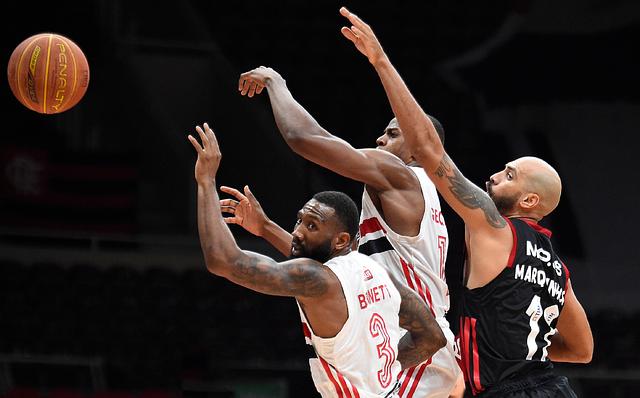Dylan Harper’s Rookie Season: Navigating Early Challenges and Future Prospects
Initial Hurdles in Harper’s NBA Debut Spark Questions About Rookie of the Year Prospects
Dylan Harper entered the NBA with considerable fanfare, hailed as a top contender for the Rookie of the Year award after an impressive collegiate tenure. However, his transition to the professional ranks has been marked by unexpected difficulties. Harper’s early-season performance indicators reveal struggles with consistency, particularly in shooting accuracy and ball control. His field goal percentage hovers near 38%, noticeably below the rookie average, while turnovers have increased as he adapts to the faster pace and physical demands of the NBA. Observers note his hesitancy to take on a more assertive offensive role beyond catch-and-shoot opportunities, which has limited his influence during critical game moments.
Below is a comparison of Harper’s current stats against the average rookie benchmarks, highlighting the areas where he faces the steepest learning curve:
| Statistic | Harper’s Early Season | Rookie Average |
|---|---|---|
| Points Per Game | 9.7 | 12.5 |
| Field Goal Percentage | 38% | 44% |
| Turnovers Per Game | 3.1 | 2.2 |
| Assist-to-Turnover Ratio | 1.1 | 1.8 |
Coaches and analysts alike emphasize that Harper’s path forward hinges on refining his decision-making and enhancing off-ball movement. The pressure to meet lofty expectations, combined with the natural adjustment period for rookies, has complicated his early development. Focused effort on these areas will be essential if Harper aims to regain momentum and solidify his standing as a top rookie candidate.
Dissecting Harper’s Performance Metrics: Insights into His NBA Adaptation
Harper’s statistical profile underscores the challenges inherent in transitioning from college basketball to the NBA’s elite level. His shooting percentage remains below the league’s rookie average, a reflection of both shot selection issues and the heightened defensive pressure he faces. Additionally, his assist-to-turnover ratio suggests ongoing struggles with court vision and composure under duress-key differentiators for successful first-year players.
Beyond scoring and playmaking, Harper’s contributions on the boards and defense also lag behind his peers. For a guard expected to impact multiple facets of the game, these deficiencies highlight areas requiring immediate attention. The table below summarizes critical metrics where Harper trails the rookie cohort:
| Metric | Harper | Rookie Average |
|---|---|---|
| Field Goal Percentage | 39.2% | 44.5% |
| Assist-to-Turnover Ratio | 1.2 | 1.7 |
| Rebounds Per Game | 3.1 | 4.4 |
| Defensive Rating | 112.5 | 107.8 |
- Shot Selection: Harper must optimize his offensive choices to improve scoring efficiency.
- Playmaking Skills: Enhancing his assist-to-turnover ratio is vital for success in the NBA’s fast-paced environment.
- Defensive Consistency: Strengthening his defensive presence will increase his overall value on the floor.
- Physical Engagement: Boosting rebounding numbers reflects a need for greater physicality and effort.
How Team Environment and Role Limit Harper’s Ability to Shine
The dynamics within Harper’s team have played a significant role in shaping his rookie season trajectory. The presence of established veterans and a deep guard rotation restricts his playing time and offensive opportunities, making it difficult for him to fully display his skill set. While Harper has shown glimpses of his potential, the current rotation strategy favors experienced players, which limits his chances to leverage his athleticism and court awareness.
Several team-related factors influencing Harper’s role include:
- Coaching preferences that prioritize veteran experience over rookie development
- Competition for minutes with other guards who have similar usage demands
- Defensive schemes that require Harper to adapt beyond his natural style of play
| Team Factor | Impact on Harper |
|---|---|
| Depth in Guard Rotation | Reduced minutes and limited offensive control |
| Veteran Leadership | Provides mentorship but can overshadow rookie contributions |
| Defensive Responsibilities | Increased pressure leading to fatigue and inconsistent performance |
These limitations have contributed to uneven performances, affecting Harper’s confidence and statistical output. Without adjustments in coaching strategy or role allocation, his ability to mount a strong Rookie of the Year campaign may remain compromised. Balancing the nurturing of young talent within a competitive team environment is a critical challenge for Harper’s development moving forward.
Pathways for Harper to Reignite His Rookie of the Year Campaign
To reclaim his position as a leading rookie candidate, Dylan Harper must focus on delivering consistent performances. Prioritizing shooting efficiency and smarter decision-making will be key to increasing his on-court impact. Experts agree that reducing turnovers and improving shooting percentages could significantly shift the narrative around his rookie season. Additionally, adding a more aggressive defensive presence would round out his contributions and appeal to voters.
Here are strategic approaches Harper can adopt to boost his performance:
- Exploit Favorable Matchups: Target games against teams with weaker defenses to enhance scoring output.
- Improve Physical Conditioning: Maintain stamina to perform strongly throughout entire games, demonstrating resilience.
- Develop Leadership Qualities: Embrace greater responsibility on and off the court to elevate his overall value.
| Focus Area | Recommended Action | Anticipated Result |
|---|---|---|
| Shooting Efficiency | Refine shot selection and develop mid-range game | Improved field goal percentage and scoring reliability |
| Ball Security | Enhance decision-making under pressure | Reduced turnovers and better assist-to-turnover ratio |
| Defensive Intensity | Increase on-ball defense and help-side rotations | Stronger plus/minus impact and improved team defense metrics |
Conclusion: The Road Ahead for Dylan Harper’s Rookie Campaign
Dylan Harper’s rookie season has encountered unforeseen obstacles, complicating his pursuit of the NBA Rookie of the Year accolade. While early performances have fallen short of expectations, his underlying talent remains evident, leaving room for a potential turnaround as the season unfolds. The coming months will be critical in determining how effectively Harper adapts and elevates his game, shaping the narrative of his inaugural NBA chapter.




